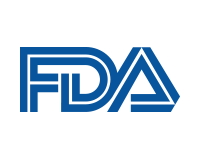United States Department of Health and Human Services

United States Food and Drug Administration: Publications
Date of this Version
2017
Document Type
Article
Citation
Proteomics Clin. Appl. 11, 7–8, 2017, 1600128, DOI 10.1002/prca.201600128.
Abstract
Purpose: Apolipoprotein A-I (ApoA-I) and apolipoprotein B-100 (ApoB-100) are amphipathic proteins that are strong predictors of cardiovascular disease risk. The traceable calibration of apolipoprotein assays is a persistent challenge, especially for ApoB-100, which cannot be solubilized in purified form.
Experimental design: A simultaneous quantitation method for ApoA-I and ApoB-100 was developed using tryptic digestion without predigestion reduction and alkylation, followed by LC separation coupled with isotope dilution MS analysis. The accuracy of the method was assured by selecting structurally exposed signature peptides, optimal choice of detergent, protein: enzyme ratio, and incubation time. Peptide calibrators were value assigned by isobaric tagging isotope dilution MS amino acid analysis.
Results: Themethod reproducibility was validated in technical repeats of three serum samples, giving 2–3% intraday CVs (N = 5) and <7% interday CVs (N = 21). The repeated analysis of interlaboratory harmonization standards showed −1% difference for ApoA-I and −12% for ApoB-100 relative to the assigned value. The applicability of the method was demonstrated by repeated analysis of 24 patient samples with a wide range of total cholesterol and triglyceride levels.
Conclusions and clinical relevance: The method is applicable for simultaneous analysis of ApoA-I and ApoB-100 in patient samples, and for characterization of serum pool calibrators for other analytical platforms.
Included in
Dietetics and Clinical Nutrition Commons, Health and Medical Administration Commons, Health Services Administration Commons, Pharmaceutical Preparations Commons, Pharmacy Administration, Policy and Regulation Commons


Comments
U.S. government work.